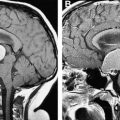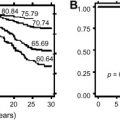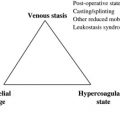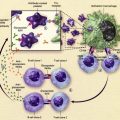Acute myeloid leukemia (AML) is a heterogeneous group of leukemias that result from clonal transformation of hematopoietic precursors through the acquisition of chromosomal rearrangements and multiple gene mutations. As a result of highly collaborative clinical research by pediatric cooperative cancer groups worldwide, disease-free survival has improved significantly during the past 3 decades. Further improvements in outcomes of children who have AML probably will reflect continued progress in understanding the biology of AML and the concomitant development of new molecularly targeted agents for use in combination with conventional chemotherapy drugs.
Acute myeloid leukemia (AML) is a heterogeneous group of leukemias that arise in precursors of myeloid, erythroid, megakaryocytic, and monocytic cell lineages. These leukemias result from clonal transformation of hematopoietic precursors through the acquisition of chromosomal rearrangements and multiple gene mutations. New molecular technologies have allowed a better understanding of these molecular events, improved classification of AML according to risk, and the development of molecularly targeted therapies. As a result of highly collaborative clinical research by pediatric cooperative cancer groups worldwide, disease-free survival (DFS) has improved significantly during the past 3 decades. Further improvements in the outcome of children who have AML probably will reflect continued progress in understanding the biology of AML and the concomitant development of new molecularly targeted agents for use in combination with conventional chemotherapy drugs.
Epidemiology and risk factors
Approximately 6500 children and adolescents in the United States develop acute leukemia each year. AML comprises only 15% to 20% of these cases but accounts for a disproportionate 30% of deaths from acute leukemia. The incidence of pediatric AML is estimated to be between five and seven cases per million people per year, with a peak incidence of 11 cases per million at 2 years of age. Incidence reaches a low point at age approximately 9 years, then increases to nine cases per million during adolescence and remains relatively stable until age 55 years. There is no difference in incidence between male and female or black and white populations. There is, however, evidence suggesting that incidence is highest in Hispanic children, intermediate in black children (5.8 cases per million), and slightly lower in white children (4.8 cases per million). The French-American-British (FAB) classification subtypes of AML are equally represented across ethnic and racial groups with the exception of acute promyelocytic leukemia (APL), which has a higher incidence among children of Latin and Hispanic ancestry.
During the years between 1977 and 1995, the overall incidence of AML remained stable, but there was a disturbing increase in the incidence of secondary AML as the result of prior exposure to chemotherapy and radiation. This risk remains particularly high among individuals exposed to alkylating agents (cyclophosphamide, nitrogen mustard, ifosfamide, melphalan, and chlorambucil) and intercalating topoisomerase II inhibitors, including the epipodophyllotoxins (etoposide).
Most children who have de novo AML have no identifiable predisposing environmental exposure or inherited condition, although a number of environmental exposures, inherited conditions, and acquired disorders are associated with the development of AML. Myelodysplastic syndrome and AML reportedly are associated with exposure to chemotherapy and ionizing radiation and also to chemicals that include petroleum products and organic solvents (benzene), herbicides, and pesticides (organophosphates).
A large number of inherited conditions predispose children to the development of AML. Among these are Down syndrome, Fanconi anemia, severe congenital neutropenia (Kostmann syndrome), Shwachman-Diamond syndrome, Diamond-Blackfan syndrome, neurofibromatosis type 1, Noonan syndrome, dyskeratosis congenita, familial platelet disorder with a predisposition to AML (FDP/AML), congenital amegakaryocytic thrombocytopenia, ataxia-telangiectasia, Klinefelter’s syndrome, Li-Fraumeni syndrome, and Bloom syndrome.
Finally, AML has been associated with several acquired conditions including aplastic anemia, myelodysplastic syndrome, acquired amegakaryocytic thrombocytopenia, and paroxysmal nocturnal hemoglobinuria.
Stay updated, free articles. Join our Telegram channel

Full access? Get Clinical Tree







